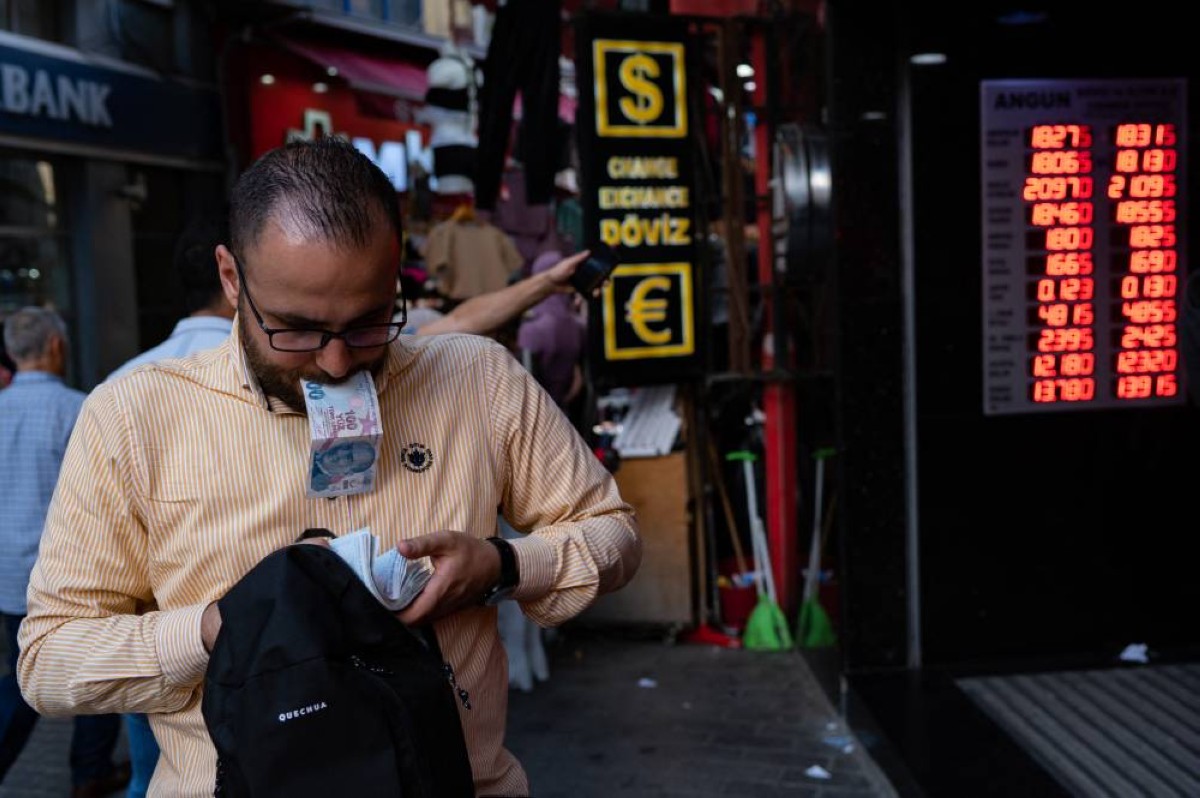Economic data varies drastically on both sides of the Atlantic
KUWAIT: PMI figures in the United States came in better than expected, indicating an expansion of business activity in the private sector.

Composite PMI improved to 51, while manufacturing PMI came in at 50 from 49.8 previously. Furthermore, services PMI rose to 50.9 from 50.1 previously. Hopes for a soft landing will be encouraged following better than expected business activity as well as positive retail sales and employment figures. Additionally, major publicly traded corporations reported positive earnings which indicates that consumers and the US economy remain resilient in the face of high interest rates, elevated energy prices, and rising geopolitical tensions. The US dollar index held its strength following the release of the report, last trading at 106.18.
Unemployment claims
Although the labor market is gradually cooling, conditions remain tight, with claims at the low end of their typical range. Unemployment claims came in at 210,000 up 10,000 from the previous week’s figure and higher than expected by 2,000. Continuing claims, a reading on the number of people receiving ongoing unemployment assistance, climbed by 63,000 to 1.790 million in the week ended Oct 14. Nancy Vanden Houten, lead US economist at Oxford Economics, noted continuing claims increased for the third consecutive week, climbing to their highest level since May.
As the word “recession” continues to ring in the ears of markets worldwide, the US economy continues to defy the odds. The US economy grew at its fastest pace in two years, aided by the seemingly robust labor market that seems to drive the power of consumer spending. Third-quarter GDP came in at 4.9 percent, better than the 4.5 percent expected by economists. As the narrative continues to differ between whether a recession is inevitable or if a “soft-landing” is achievable, the latest news continues to push economists towards the “soft-landing” side of the argument.
September’s figures showed a lack of movement in inflation, neither a sharp decline nor a rise with the recent data release.PCE inflation, the Fed’s “preferred” inflation metric, came in-line with expectations. The headline YoY rate held steady at 3.4 percent for the 3rd consecutive month, while the core YoY rate fell to 3.7 percent, the lowest level since June 2021. This should come as welcome news to the Fed while yields moved lower following the data release with the policy-sensitive 2-year yield trading near 5 percent. Fed Funds futures markets continue to price no change at next week’s FOMC.
The greenback traded sideways over the week and appreciated slightly, closing at 106.559.
Eurozone PMI
PMI numbers coming out of the eurozone are sending recessionary signals, with October PMI readings near a 3-year low. The Composite PMI fell to 46.5 from 47.2 previously, the lowest since November 2020. Manufacturing PMI declined to 43.0 from 43.4 in September, while services PMI fell to 47.8 from 48.7 previously. The decline in business activity is led by the bloc’s two largest economies -Germany and France - with the former showing contraction for the fourth straight month. An increase in geopolitical tensions and a further rise in energy prices are risk factors that could add to the woes of the bloc, as consumers are already struggling.
The European Central Bank left interest rates unchanged at 4 percent, as the market expected on Thursday, ending an unprecedented streak of 10 consecutive increases in borrowing costs while maintaining its guidance which signals steady policy ahead. Markets are now wondering how long the European Central Bank is going to keep rates elevated to bring inflation down to their 2 percent initial target.ECB president Christine Lagarde said that “she would not rule out another rate increase, adding that it was “totally premature” to discuss a potential cut.
In the United Kingdom, composite PMI came in better than expected at 48.6 from 48.5 previously. Manufacturing PMI edged higher to 45.2 from 44.3. However, business activity in the services sector declined to a 9-month low coming in at 49.2 versus expectations of 49.4. The numbers indicate a contraction in all fronts of business activity, and the worry is that further contractions amid weaker employment and retail sales numbers will push the economy into a recession while having the highest inflation rate out of the G7 economies. In addition, the BoE’s objective of getting inflation to its 2 percent level from 6.7 percent recorded in September has been complicated.
Uncertainty is growing regarding the impact of its 14 rates hikes to date yet to be felt. Headline inflation failed to come down in September, and price growth in the services sector - which largely reflects stubbornly high pressures - has accelerated. The last monetary policy committee meeting that was held in September resulted in five members voting to pause, outnumbering the four who sought another increase. With that said, markets are expecting that Governor Andrew bailey and his colleagues will keep bank rates at a 15- year high of 5.25 percent on Nov 2.
Japan’s inflation
Tokyo’s core consumer price index (CPI) which excludes volatile fresh food prices came in at 2.7 percent y/y versus the expectations of 2.5 percent y/y. Meanwhile the headline inflation rate came in at 3.3 percent y/y for October, accelerating from 2.8 percent the prior month. Higher food prices were a key contributor to the higher inflation figure, as well as higher fuel prices. Given higher than expected Japanese inflation, markets will watch next week’s BoJ meeting closely.
In a data release by the Reserve Bank of Australia on Wednesday, the consumer price index showed a 1.2 percent increase in Q3 from 0.80 percent seen in Q2. On an annual basis, CPI declined to 5.40 percent from 6.00 percent previously. The Australian dollar depreciated in value against the US dollar following this news release as investors expected a higher inflation print. Despite inflation declining, the new Governor Michele Bullock said, in her strongest reference yet to the threat of renewed price pressures. “Our focus remains on bringing inflation back to target within a reasonable timeframe, while keeping employment growing,” he said.
The AUD/USD currency pair is up on the week, last trading at 0.6334.
Kuwaiti dinar
USD/KWD closed last week at 0.30895.











